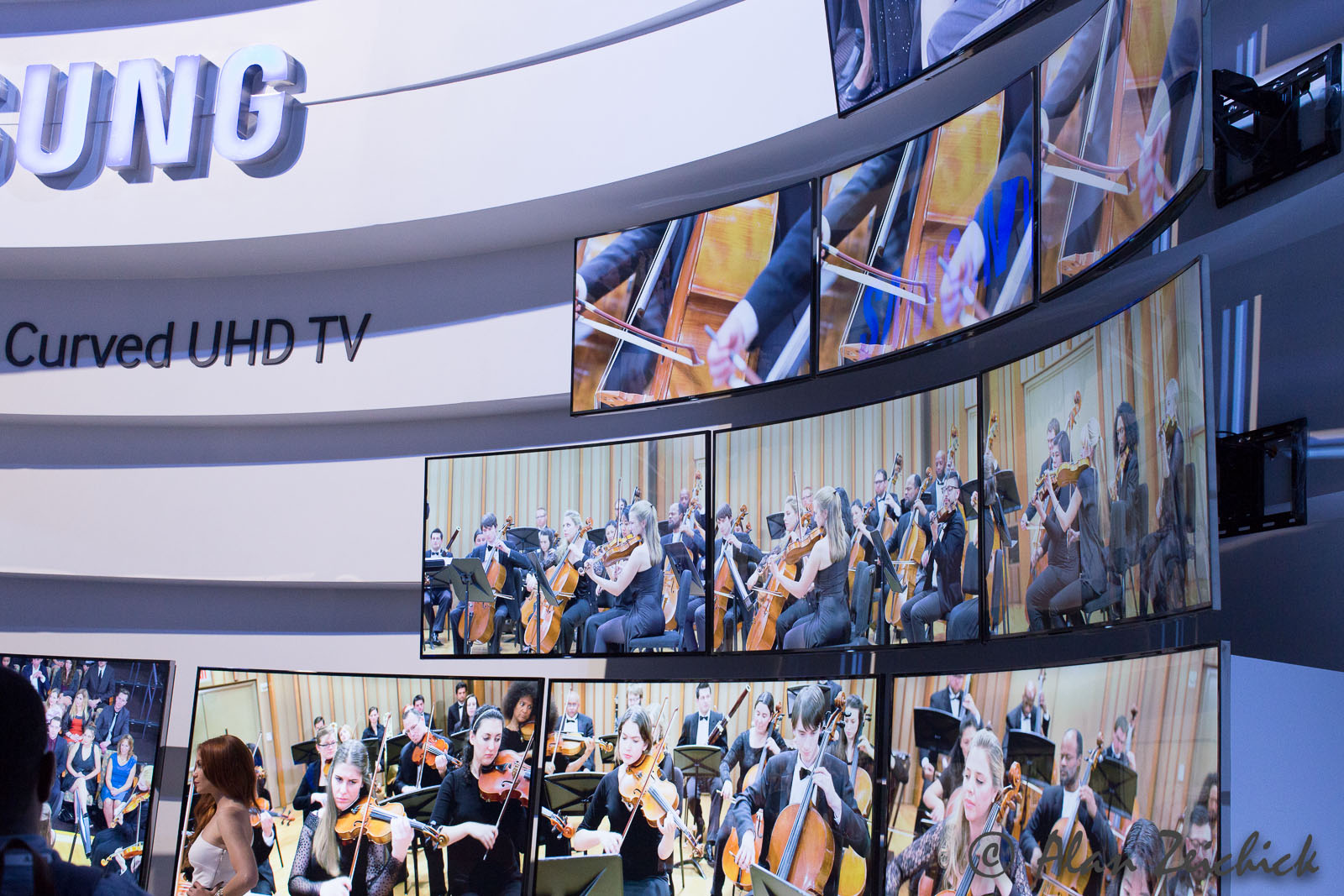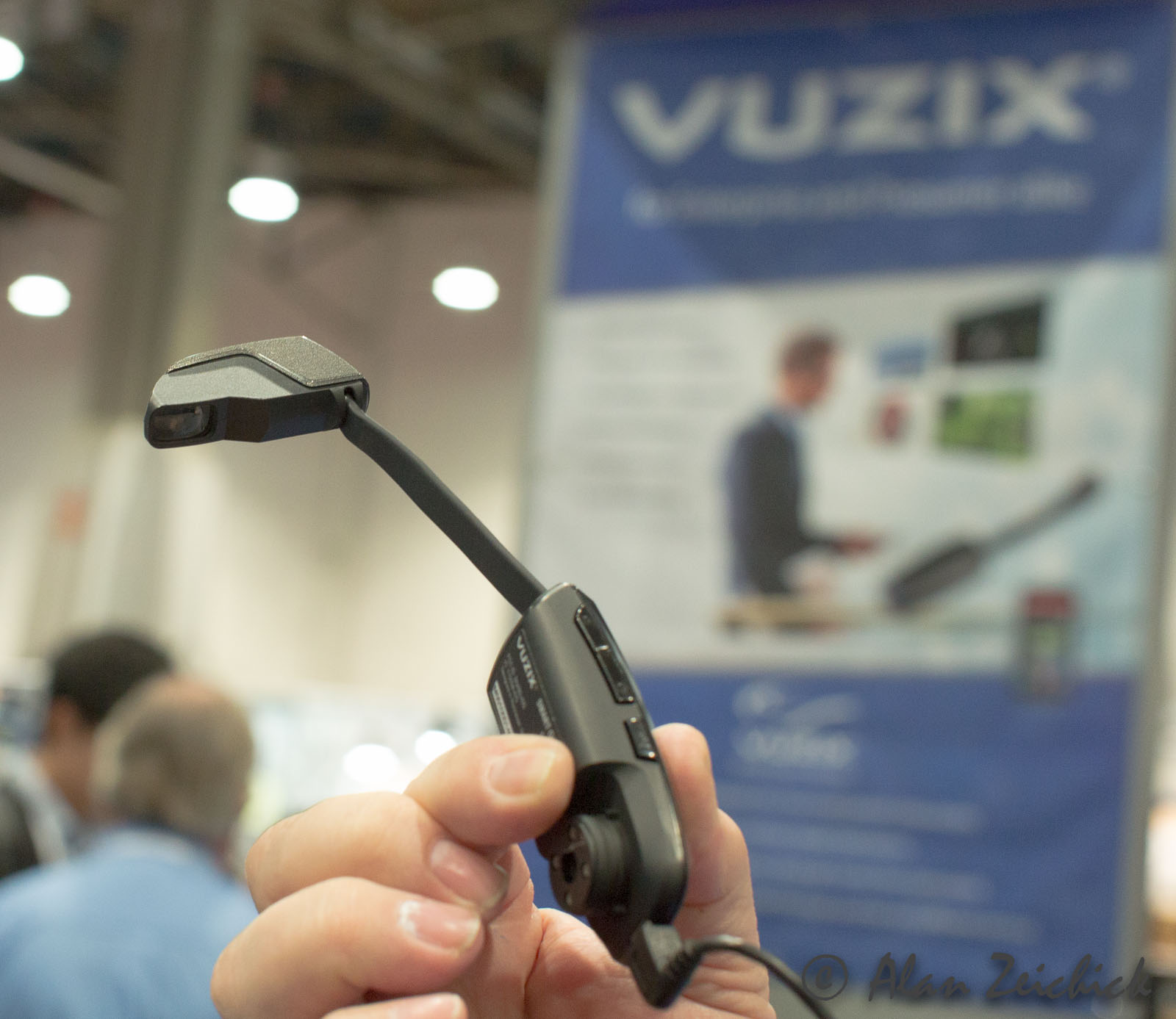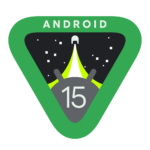LAS VEGAS — If you are a geek, there are few events geekier than the huge Consumer Electronics Show, held here each January. Here is where you’ll find the latest toys, toys, toys, toys, toys and toys. Such as smart glasses, smart cars, shape-recognizing SDKs, robots with intelligent programmable faces, and so much more.
Most of the 150,000+ people who attended CES were mesmerized by the show-stopping curved UHD (ultra high definition) televisions that are at either 4K (2160p) or 8K (4320p) resolution. The 105-inch model from LG blows my home 60-inch Samsung 1080p television out of the water, and yes, I’ll buy one in a few years.

Curved ultra high definition televisions, like these 4K models from Samsung, stole the show at the 2014 Consumer Electronics Show.
Beyond TVs, there are lots of 3D printers from startups like MakerBot, feature-packed cameras from giants like Canon, self-driving cars from BMW, wearables like the LG Lifeband, and phone cases. Hundreds of booths with phone cases. It’s amazing how many phone case manufacturers and distributors are here in Las Vegas.
(Who the heck needs all those phone cases? The mind boggles.)
One thing I learned at CES—though I’m sure it’s common knowledge in the robotics community—is that it’s easier to build a robot that has a large LCD screen with an animated face instead of constructing a real humanoid robotic face. The cartoon face is more expressive and less intimidating than a realistic simulacrum. Plus, software is a lot less expensive to create and update than animatronic bones, skin, motors and servos.
Beyond TVs, cameras and phone cases, here are two introductions from smaller companies that caught my eye at CES as being very interesting for software developers:
#!• The new M100 smart glasses from Vuzix are similar to Google Glass, only you can buy it today, it’s less expensive than Google Glass (US$999), it’s a full Android implementation, and you don’t have to jump through Google’s restrictive hoops to build apps. If you are willing to forego the snob value of genuine Google Glass, and don’t need quite the high-end hardware, you can have an Ice Cream Sandwich head-mount display with 24-bit color, a 400×240 display, 1GB of RAM, 4GB of storage, a MicroSD slot, a speaker, a noise-cancelling microphone, a 5MP camera, 1080p video, a six-hour battery, WiFi and Bluetooth. Most recently, Vuzix announced that a software update will add voice recognition based on Nuance speech technology. Yes, you won’t get Google Glass’ 640×360 display, but did I mention the M100 is available now?

It’s here now, it’s less expensive than Google Glass, and its Android stack is wide open to developers: the M100 Smart Glasses from Vuzix. The kit includes the glasses, and you can wear it on either the left or right side.
• The Asus Transformer Book Duet is a head-scratcher. It’s an Intel-based laptop that looks like an Apple MacBook Air, but runs both Windows 8.1 and Android 4.2.2. The review from Ars Technica says it best: It’s clunky. Let’s assume that it gets less clunky. What would you (or your customers or employees) do with a single device that combines the best of Windows and the best of Android? I’m not sure, but if Intel’s “Dual OS” concept catches on, there could be interesting developer opportunities.
By the way, my favorite tech event that’s even geekier than CES is ACM SIGGRAPH. Catch it in Vancouver this August. Gosh, I hope there aren’t any phone cases there.
Which new electronic goodies are you most interested in for home or office? Write me at alan@camdenassociates.com.
Alan Zeichick, founding editor of SD Times, is principal analyst of Camden Associates.






